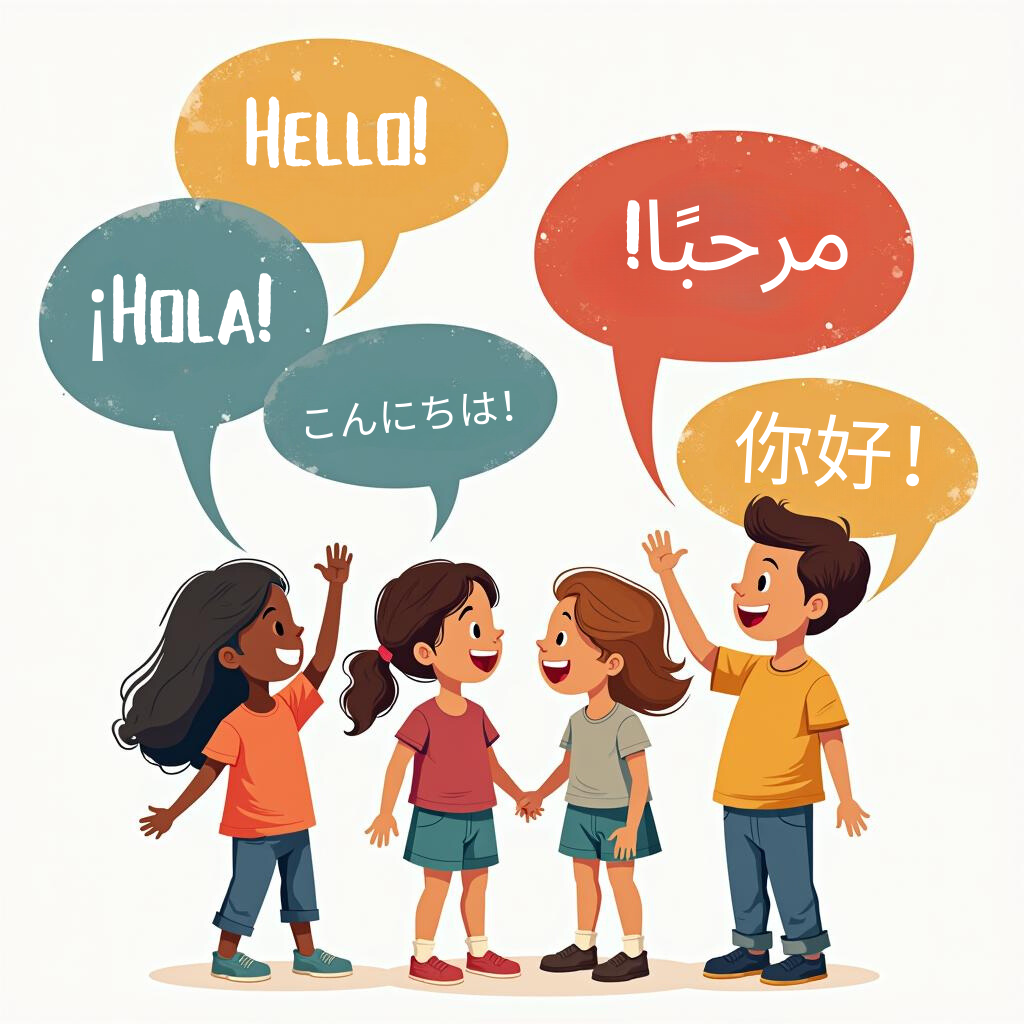Join many families who are unlocking their children's linguistic potential with Voiczy.
Try Free for 7 Days - Cancel Anytime
Published on:
In today’s interconnected world, speaking multiple languages is more valuable than ever. As a parent raising bilingual children, I’m excited to share this guide to help you navigate this rewarding journey. Whether you’re just starting or looking to refine your approach, this guide offers expert-backed strategies and personal insights to support your family’s multilingual adventure.

My partner and I come from different cultural backgrounds and speak different languages. When we had our first child, we set a rule: I would speak my native language, and my partner would speak theirs. This approach is known as the One Parent, One Language (OPOL) method. It’s a well-known strategy that helps children learn at least two languages naturally while minimizing language mixing. When he was two years old, he was already fluent (as the expected level of his age) in both languages.
In addition to this, we faced another challenge: living as expats in the Netherlands. This meant that Dutch would be our child’s third language, learned in preschool. We were concerned about language mixing and slower-than-expected progress in learning Dutch. After discussing our concerns with preschool teachers, they recommended speech therapy (in Dutch, " Logopedie") to support our child’s Dutch language development and offered valuable advice.
Following their guidance, we began speech therapy and applied the tips we received. Initially, we visited a speech therapist every three weeks, but the progress was slow due to the low frequency of sessions. After a few months, we switched to a therapist we could see weekly, which led to faster and more noticeable improvements.
Our first therapist, who we visited every three weeks, was older and used more traditional methods. She suggested we speak only one language at home, but we felt this wouldn't suit our family. The second therapist, who was younger and more experienced with bilingual children, encouraged us to continue with the OPOL method and assured us that our approach was appropriate for our child’s needs.
To keep our child connected to our cultures and exposed to different accents, we often have daily video calls with our families—brothers, sisters, and parents. During these calls, we let our son have full conversations with them without interrupting. We hold the phone and encourage him to start the conversation, making it feel as though he’s the one calling his grandparents. This practice is beneficial for his mental well-being, helping him build a strong bond with our parents. It’s also great for our parents’ well-being, allowing them to stay involved in their grandchild's growth. Grandparents play a significant role in children's well-being, so maintaining this connection is essential.
If you live far from your parents, consider having regular video calls with them, allowing your child to express themselves freely in their native language.
Another method we use to help overcome his shyness is asking him to send voice messages to our family. We start the voice recorder and encourage him to share a story or sing a song for his grandparents or other relatives, then send it to them. When he receives a voice response in return, it gives him a sense of being heard and valued, which can boost his self-esteem as well.
While our methods are mostly digital, this is due to our circumstances, as we live far from our families. Over time, we developed these approaches to keep our child connected with loved ones while also supporting his social development.
If you don't have the distance barrier, consider having regular visits or inviting grandparents and other relatives to play their part in your child's language and social development.
Bilingualism offers benefits beyond communication skills—it shapes how children think, perceive the world, and connect with their heritage. Here are the key advantages:
Research shows that bilingual children often have enhanced problem-solving skills, better focus, and more creative thinking abilities. Dr. Gigi Luk, a professor at Harvard, highlights that bilingualism can shape our brains for a lifetime, improving attention control and cognitive flexibility. A study published in Bilingualism: Language and Cognition found that these cognitive benefits persist into adulthood.
Bilingualism allows children to bond deeply with both sides of their family, creating a bridge between generations and enabling communication with grandparents and extended relatives.
Bilingualism can open doors in international business, diplomacy, and local roles in diverse communities, offering a competitive edge in today’s job market.
Exposure to multiple languages fosters cultural appreciation and empathy, helping children navigate today’s globalized world.
Supporting your child’s bilingual journey starts with understanding language acquisition. Here’s a breakdown:
0-3 years: Building a Foundation
3-7 years: Vocabulary Growth
7-Puberty: Refining Skills
One Parent, One Language (OPOL)
Songs and Rhymes
Bilingual Picture Books
Role-Playing
Language-Specific Playgroups
Daily Object Naming
After-School Language Classes
Bilingual Homework Help
Games and Apps for Language Learning
Home Language Days
Cultural Celebrations
Travel and Immersion
Books:
Online Communities:
Cultural Resources:
Raising bilingual children is challenging but rewarding. Embrace the process, stay consistent, and celebrate each step. Remember, you’re not just teaching a language—you’re giving your child a gift that connects them to their heritage and the wider world.
Seeing your child communicate with both sides of the family is worth every effort. You’re opening doors to a world of opportunities, and that is something to be proud of. Best of luck on this incredible journey! You can also use Voiczy, in order to boost your child's language skills.